Stanislaus State faculty members are involved in a wide variety of research and projects that may be unknown to students and faculty in other disciplines. The Faculty Spotlight Series is changing that by sharing the scholarly and creative work of faculty members with a broader audience.
“What we hope to accomplish from this event is to expose the campus community — teachers, students and the general community — to the exciting work that faculty are doing,” said Jesse Wolfe, professor of English and organizer of the Faculty Spotlight Series.
Speakers in this series, staged every semester by the College of the Arts, Humanities and Social Sciences, cover a range of topics, from their scholarly work to their original art and innovative teaching practices, inside and outside of the classroom.
On Oct. 19, two professors from differing fields of study shared aspects of their work. Jeffrey Frost, assistant professor of anthropology, discussed his archaeological work on the Chiriquí culture in Costa Rica, and Susan Stephenson, assistant professor of art, presented her landscape paintings and described how she is inspired to paint by examining the uniqueness of everyday settings.
“Everything I do is done from direct observation, on site and on location,” Stephenson told the the University Library audience. “There is nothing wrong with working from photographs, but for me, the thing that I like about the whole process is that transcendent moment that sometimes happens when you’re on site and you’re responding to relationships by becoming a conduit for something else. It’s magnificent, and I never get that when I’m working from flat to flat. For me it’s being in the world and having to navigate the difficulties that make it interesting.”
Stephenson always uses oil paint, not on canvas, but on prepared birch panel. She notices visual patterns, often by the way sunlight and shadows hit everyday objects — such as stop signs and traffic lights — that casual observers often overlook. However, after the painting starts, Stephenson begins to notice the lines and triangles that make her work compelling, kooky and beautiful.
“I’m trying to get that experience of what’s important to me at this one spot and it has very little to do with place,” Stephenson said. “A lot of times people like a certain image because of their association with a location, but for me, it has nothing to do with that. It has to do with the patterns and the experience of being there.”
“I recognize the sounds and the breeze and I wish I could bottle that or somehow transmit that in the viewing. But, for a moment, if people can stand in just about the right area from the work, if it’s big enough, people can feel lost in that moment. That’s what I’m going for.”
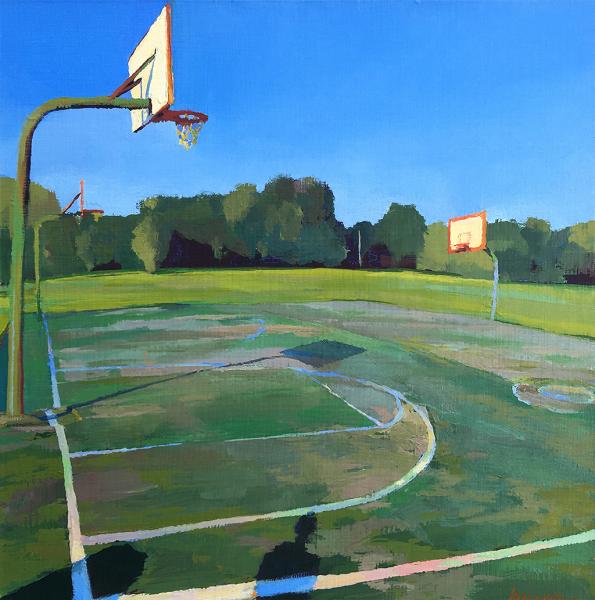
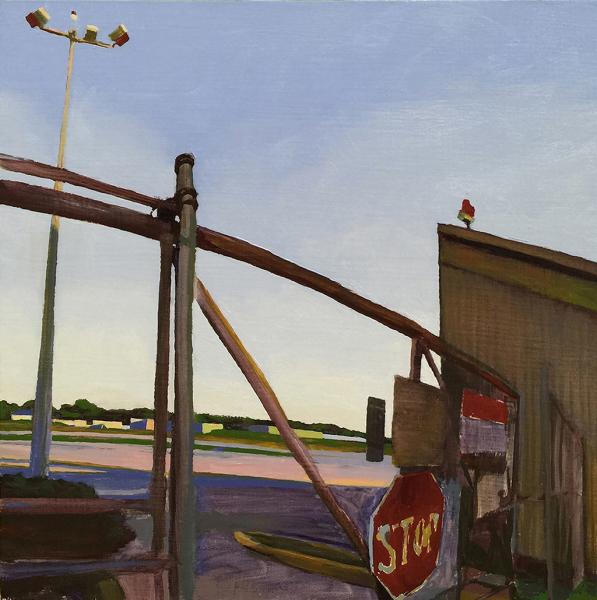
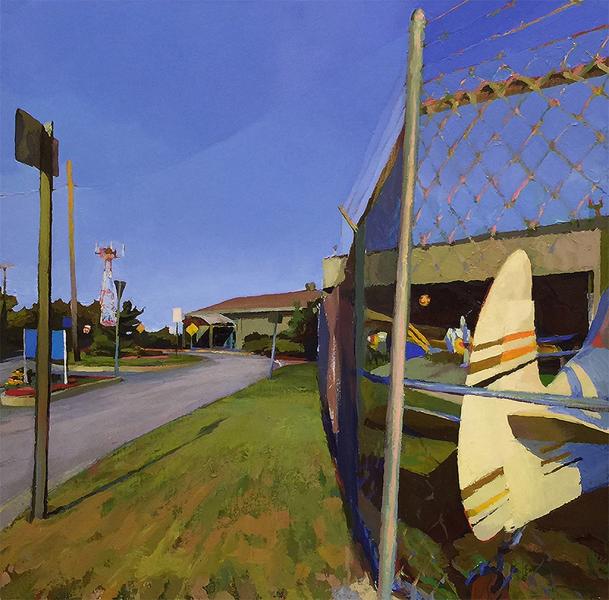
Frost presented his work “Public Rituals of Central American Native Peoples,” which focuses on the Chiriquí communities from Southern Costa Rica and Western Panama. Making frequent trips to the region, Frost searches for archaeological evidence dating back to approximately A.D. 700-1500. His work focuses on the material remains that provide ethnographic evidence on lifestyle, architecture, ceremonial rituals and funerary practices from that era.
“What I’ve found is a remarkable correlation between what we expect based on written accounts and what we are finding archaeologically,” Frost said in his lecture. “These reports all agree that once someone died, the body was taken to a building, stripped of its clothing, anointed by ritual specialists with oils and aromatics, re-dressed and wrapped in bark cloth.”
In his visual presentation, Frost mapped out structures for the audience to understand the long journey taken from village to grave.
“After the body was wrapped, it was put on public display and left for a series of nine days,” Frost said. “One of the things that often happened during this nine-day period is people mourned and smashed pottery. In fact, we have found evidence of smashed pottery that was purposefully smashed and left in place. It’s then said that during this period a funeral fire was lit and burned intensely so that everyone could see it — a sacred funeral fire. There are a number of places on site where we have seen evidence of the burning.”
Frost explained how stone columns located between the village and cemetery showed evidence of burning and displayed diagrams that gave perspective on the size and scope of the funeral fires designed to be seen by everyone in the village.
“After that nine-day period, the bodies were taken to a location out of sight of the village and they were covered up and left for a period of at least one year, sometimes as long as five years,” Frost explained. “The idea was the body during that time would decay and the spirit of the deceased would move from the land of the living to the realm of the dead. Only the proper preparation of the body could ensure that the spirit made it to its final destination.”
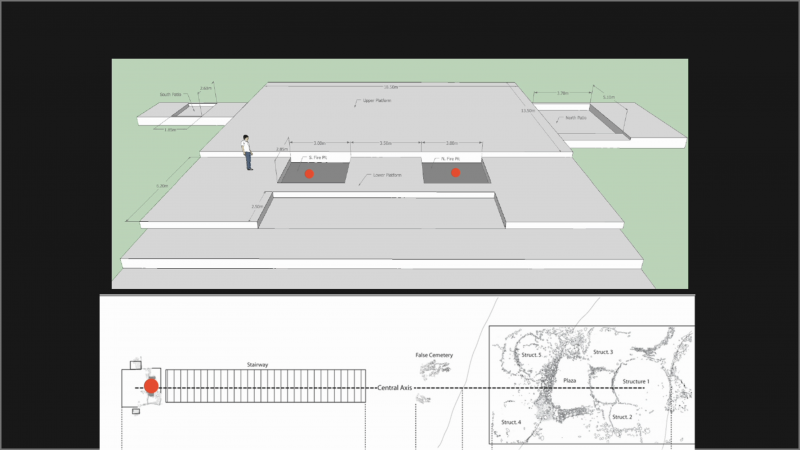
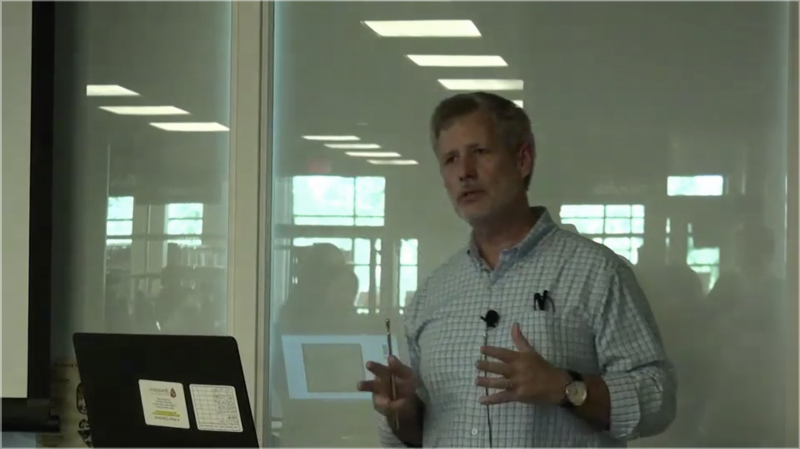
Frost and Stephenson are examples of the wide variety of research and expertise showcased at the Faculty Spotlight Series. Their full lectures are archived online.
Students, faculty and staff can look forward to another Faculty Spotlight Series during the spring semester, as Daniel Edwards, professor of art; Eric Broadwater, chair of the Department of Theatre; and Sari Miller-Antonio, professor of anthropology and associate dean; will lead discussions of 3D printing. Jennifer Whitmer, assistant professor of sociology, will give a separate talk presenting her research on women’s experiences using dating apps, focusing on online sexual harassment.